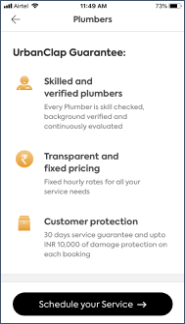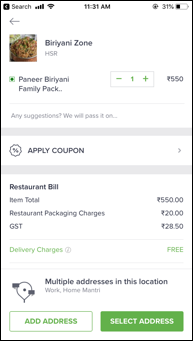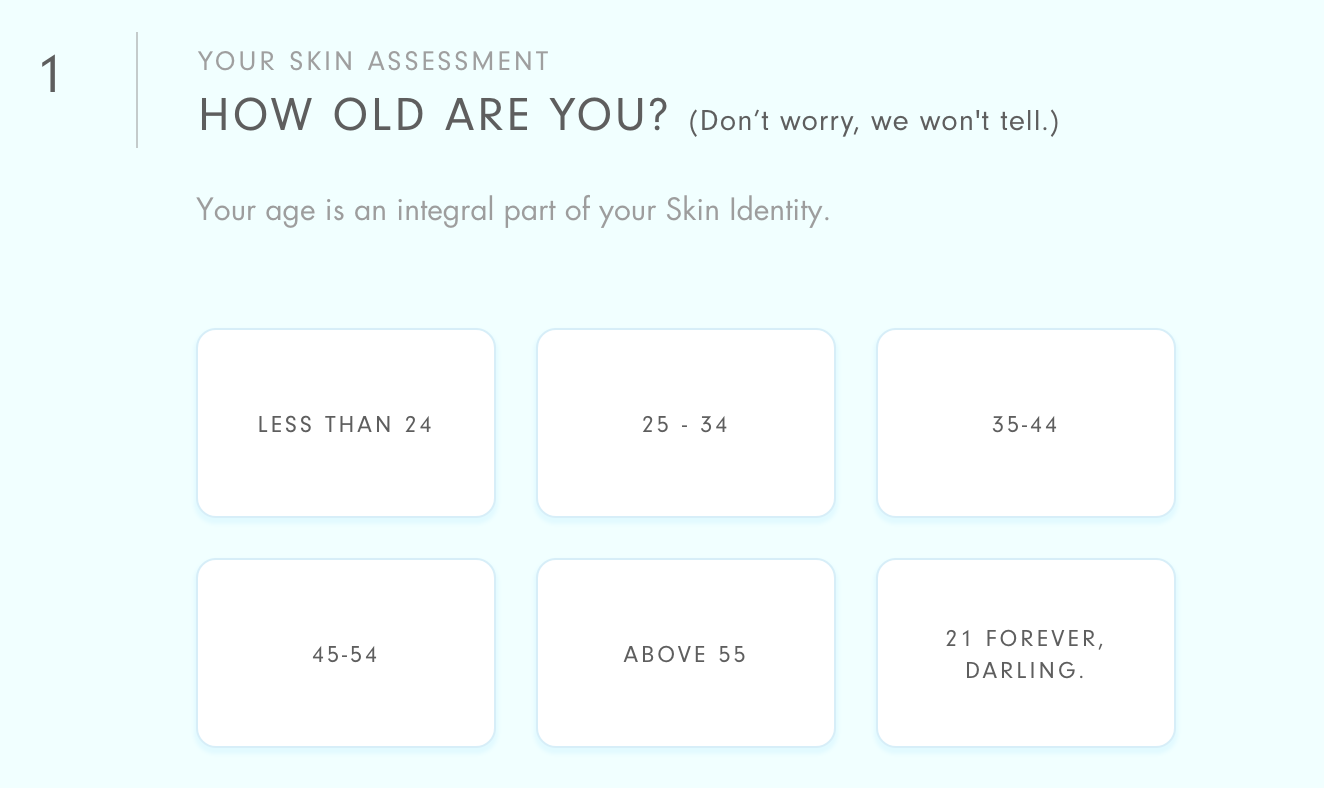Product
Removing Buyer Friction by Understanding the Buyer’s Journey

Summary
One of the biggest challenges companies of any size face is acquiring customers, efficiently and retaining them. Acquiring users and getting them to become customers remains a daunting task for many, and here we will be giving you the secret sauce of those who have excelled in this task.
What to expect from this article -
- A framework on how to structure your sales and marketing functions
- How to implement your buyer understanding with the buying environment to craft perfect conversion journey
- How to identify friction points in the conversion funnel and eliminate them
You should be reading this further, if
- Your cost of acquiring customers has been on a steady rise and at scale, it’s becoming more and more difficult convincing users to convert
- You have been running A/B experiments, seeing minor improvements but still see the business going nowhere M-o-M
- You are not able to decide on how much information to show the user and how to strike the right balance between required information and too much information
I have seen companies trying to acquire customers using the sales/ call center team when it was not really needed, only leading to more and more friction and funnel drop-offs. I have also seen companies trying to acquire customers with a touchless sales model which was nothing short of an uphill task leading to substantial intermediate drop-offs.
In this article, we will be covering a framework that will help us decide what should be our sales and marketing flow. But before that, like all good things, we will take a customer-centric approach and try to first understand who is the buyer and what does the buyer journey look like. We will be doing that using a framework that will give companies an overarching view on how companies go about decoding the buyer matrix.
The buyer matrix will look like this —

You must be wondering, when do we say a product is simple vs complex and what makes a buying environment simple or complex? Well, the below table should answer this -

The table and the four quadrants are a B2C adaption of Forrester’s B2B buyer archetype matrix.
Based on the complexity of your product and of the buyers buying environment, your sales and marketing strategy will differ. So don’t try to first define your sales and marketing flow and impose it over the buyer. First understanding the buyer journey and then reaching out to him through multiple touch-points with timely relevant information should help you avoid unnecessary friction in the conversion process.
It is important to note that different offerings by the same company can fall in different quadrants. It is important to remember that the buyer journey is product-specific and not company-specific. To drive home this point, we will be looking at an example of UrbanClap [India’s largest home service professional provider] post I walk you through the buyer journey and sales & marketing flow of the above-mentioned four quadrants.
Companies may adopt single or multiple strategies for multiple product offerings, however, there are a host of benefits for a company adopting single strategy vs different strategies. Benefits being from hiring, team structuring to cross-sell and up-sell capabilities.
Let’s deep-dive into the buyer journey for each quadrant now.
Sales & Marketing for ‘Serve-me’ Quadrant
This quadrant is relevant when the product and the buying environment is simple. Example — you trying to schedule a plumber visit, or trying to order food online. In these scenarios, your sales and marketing process should follow the ‘self-serve’ model. It works best for high-repeat x high-frequency categories or when it’s a comparatively ‘low-involvement’ category.
Buyer journey for a product falling in ‘Serve-me’ quadrant will look like this (broadly speaking)

Given the buyer journey in ‘Serve-me’ category, the sales and marketing function will be as below, with marketing taking care from awareness to getting the user to schedule an appointment or make the purchase. The sales team will have no interaction with the user.

Example of companies following ‘serve-me’ flow for some of their products —


Sales & Marketing for the ‘Guide-me’ Quadrant
The buyer journey in ‘guide-me’ quadrant along with the sales and marketing flow will be as follows, with marketing taking care from awareness to generating leads for the call-center/ sales team. The sales team will be involved in answering questions and closing the deal (as shown in orange). As companies scale, the marketing team will start qualifying leads based on BANT or any other method and also start scoring leads based on historical lead to sale data collected over a period of time. From a sales perspective, inside sales team closes deals (typically in 3–5 calls for the qualified sales opportunities)

It is important to note that marketing teams work will not stop at generating leads, they will also be involved in lead nurturing and drip marketing campaigns at each stage. The marketing team provides the inside sales team/call-center team with marketing automation support that helps with lead enrichment, lead scoring, lead routing, etc. It is also important for the marketing team to also continuously analyze the quality of the leads and lead to sale conversion number at a channel and campaign level and tweak the marketing plan accordingly. For already acquired customers, the marketing team will be involved in providing periodic newsletters, product updates, new offers, etc.
Generally, companies selling products that need some amount of explanation and some amount of customization or in some cases when the user is different from the buyer follow this approach. Delivery of the service can either be online or offline.
An example of a company that follows this flow is Coverfox (trying to sell insurance online); their marketing team focuses on generating and qualifying leads for their sales team to talk and close later.

Sales & Marketing for ‘Show-me’ Quadrant
The buyer journey in ‘show-me’ quadrant along with the sales and marketing flow will be as shown below, with the marketing team owning right from creating awareness among users to acquiring them. However, given the complexity of the buying environment, the product needs to have the right amount of information and tools necessary to help the buyer make the decision. These decision-aiding tools or flow can be a comparison tool or an ROI calculator sorts or AI-algorithm triggered personalized flow or recommended specialist (for scenarios where someone is trying to find the right service provider or seeking a second opinion) or simply a progressive web-flow showing relevant decision-aiding info at each step.

There will be no to minimal intervention from the call-center team.
An example is Rentomojo (Accel portfolio company where one can rent furniture, appliances, electronics, etc.). In this case, by providing buying vs renting comparison chart, EMI vs RMI comparison, RMI calculator and other such tools, it helps the user make the purchase decision by showing the most economically viable plan.


Another example would be iloveskininc.com that helps the user custom create personalized skin serum by asking a couple of questions and showing them the product/ serum that is best suited for them, instead of bombarding the users with a wide range of product offerings and expecting users to read through each product description and self-select what’s right for them.





and this goes on till the algorithm picks and shows the product that is best suited for your skin type, diet, daily activities, exposure to the sun, dust and many other such variables.
Sales & Marketing for the ‘Enlighten-me’ Quadrant
‘Enlighten-me’ model works best when the buying environment is complex, clubbed with product complexity. Usually, two (or more) people are involved in the purchase decision with one initiating and the other validating.
Below is the buyer journey flow with ideal sales and marketing flow.

The marketing team is involved in creating awareness and generating leads/ F2F meetings for the sales team. Marketing team with work with Field-reps to close the deal and assist them at different stages to maintain the lead interest and push them down the funnel.
Generally, products falling in low repeat, high involvement category with high ARPU fall in this category. Example of companies falling in this category would be Housing.com (buying a house) or HomeLane.com (getting home interior designed).
How to decide?
Now a company can have different products falling in different quadrants following different sales and marketing strategy. Like shown in the example below for UrbanClap [India’s largest home service professional provider]
Scenario 1 — User looking for beauty service for ‘other occasions’ like friends wedding, birthday party, etc.
Product: Simple, Buying Environment: Simple. Therefore, the product ‘Makeup-Other occasions’ will fall in the quadrant as shown in the purple text below-

Sales and marketing flow and how it gets translated into the product flow will look something like this


Scenario 2 — User looking to book beauty service for ‘own wedding’
Product: Simple, Buying Environment: Complex

Sales and marketing flow and how it gets translated into the product flow will look something like this


Scenario 3 — User looking to book home painting service
Product: Complex, Buying Environment: Complex

Sales and marketing flow and how it gets translated into the product flow will look something like this


These UrbanClap examples are only used to drive home the point that sales and marketing flow is not company-specific but product and buyer-specific.
TL;DR — No problem :) Here is the summary slide -

Before thinking about your product marketing strategy or running A/B experiments, it will be beneficial to select the quadrant your product falls in the buyer matrix and chart out the buyer journey for the persona you want to target. Post that, define the sales and marketing flow — make sure you are not running elephants to chase deers.
Moat lies in companies selling products that lie in ‘Guide-me’ and ‘Enlighten-me’ quadrant to be able to use technological advancements to push users down the funnel using a ‘serve-me’ model and to try and minimize interactions to convert the user into a customer.
In the next article, we will be looking at how to map the buyer persona and buyer journey to your marketing strategy. Stay tuned for more.
Also Read:
Decoding Buyer Matrix & Buyer Journey for your SaaS business
Align your Sales & Marketing with the Buyer Journey
We’re looking for the next generation of successful Indian marketplaces. If you’re an early-stage marketplace founder, apply now here or learn more about the #DecodingMarketplaces Startup Hunt.
We’d love to hear about your experiences with marketplaces. Let us share our learnings and build a better and stronger ecosystem. Write to us at seedtoscale@accel.com to be a part of the Accel family.
Subscribe to SeedToScale
/subscribe to get the latest stories from SeedToScale/



